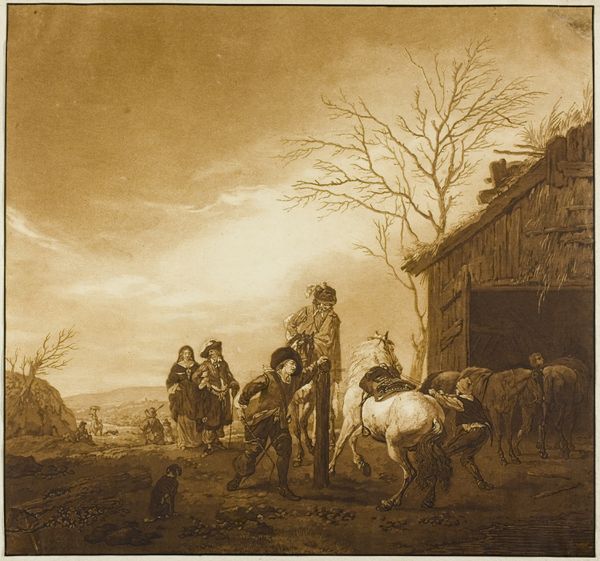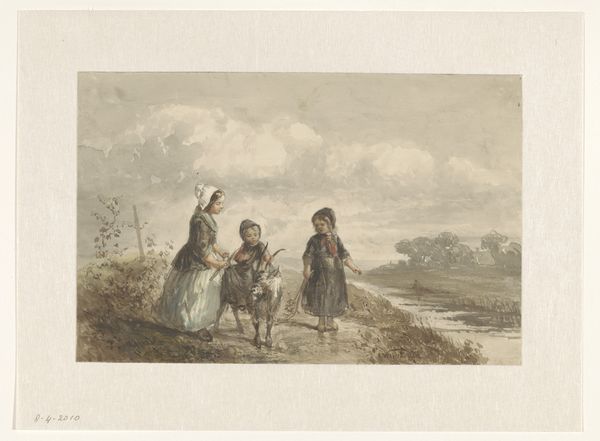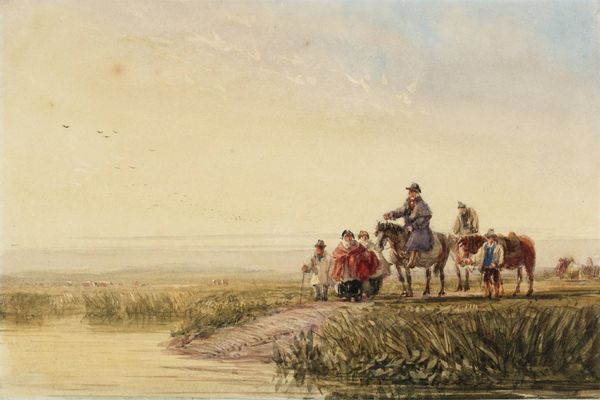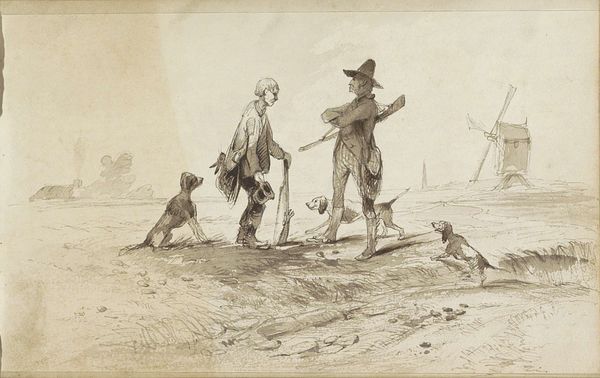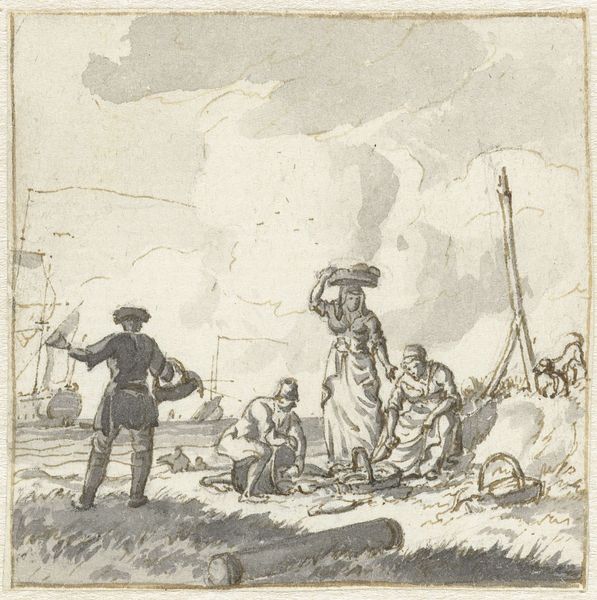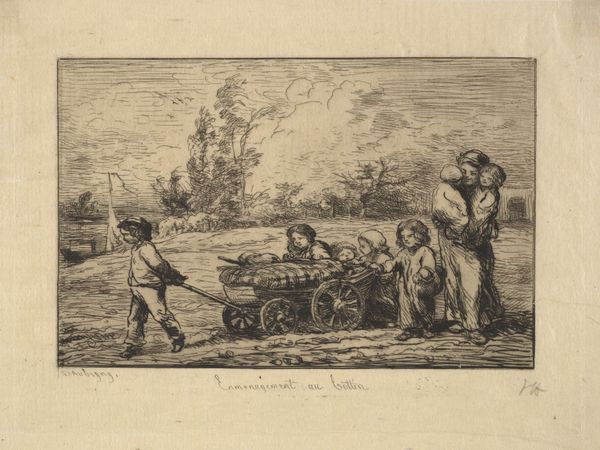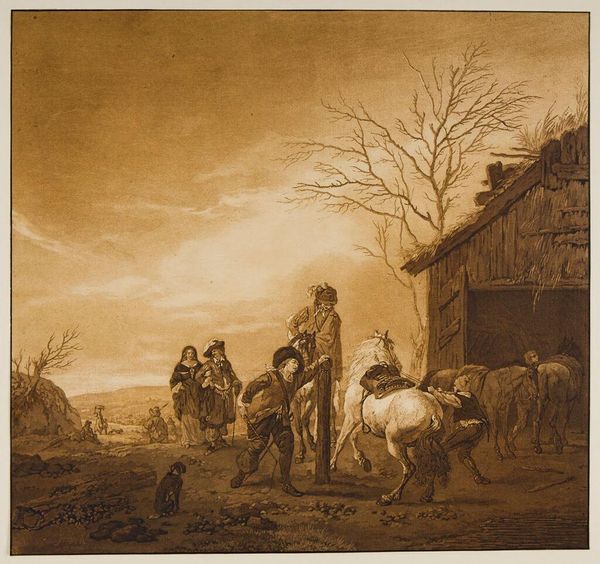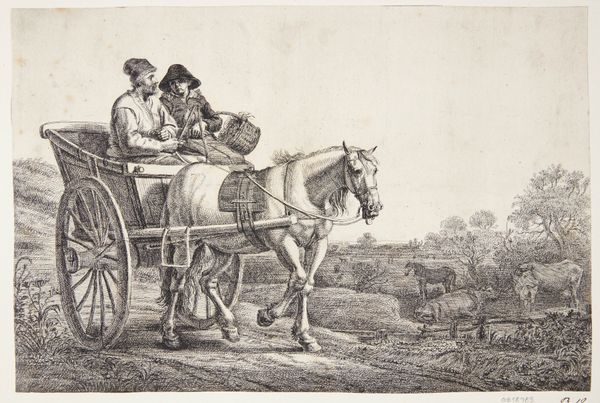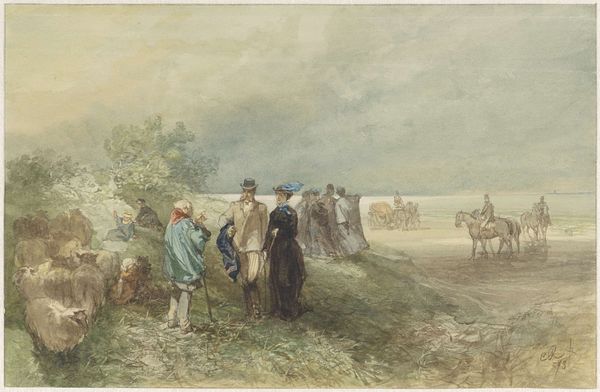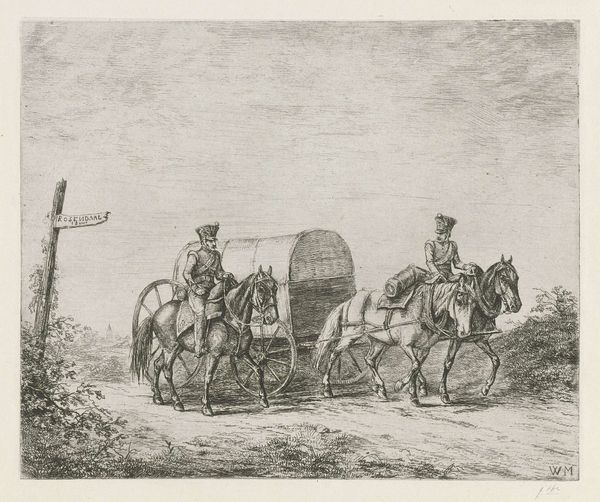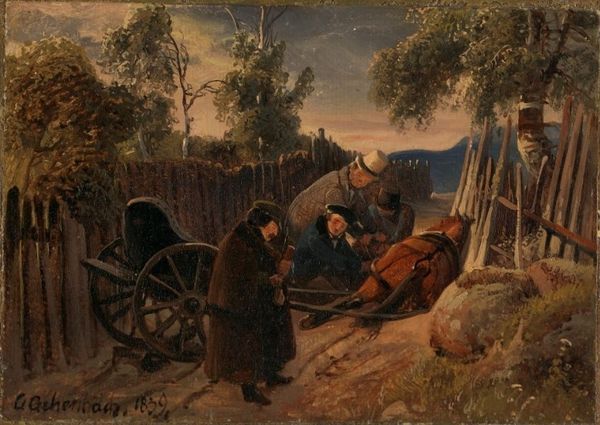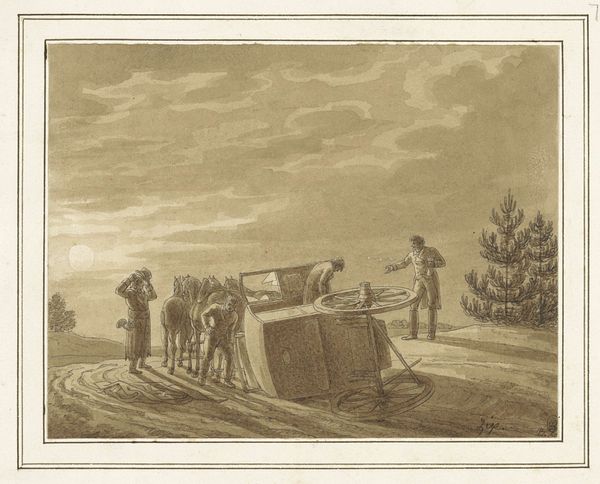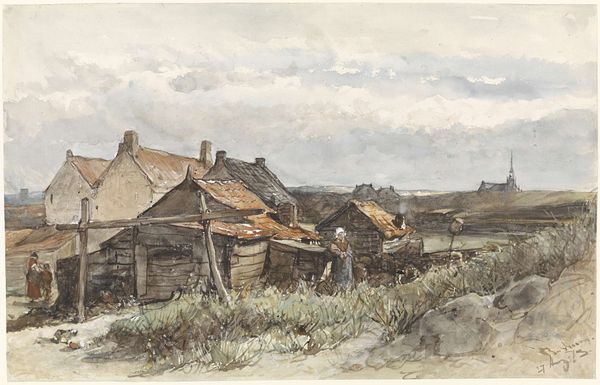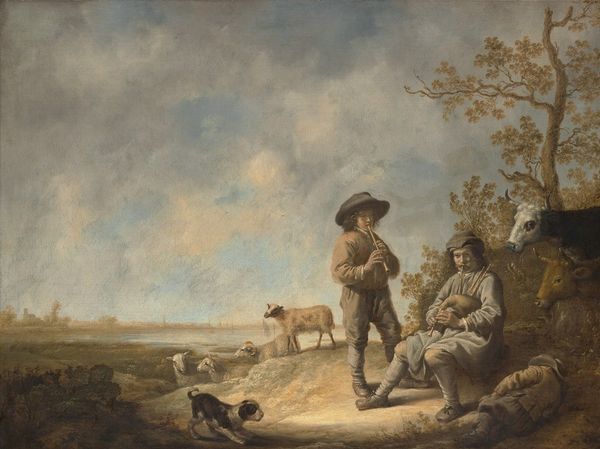
A Fisherman's Family at the Beach, the Mother and One of the Children Sitting in a Cart 1855
0:00
0:00
Dimensions: 8 11/16 x 12 1/16 in. (22 x 30.7 cm)
Copyright: Public Domain
Editor: We’re looking at “A Fisherman's Family at the Beach,” a watercolor by Jan Gerard Smits from 1855, currently at the Met. There's such a melancholic feel to the muted tones and the seemingly weary figures. How do you interpret this work through a historical lens? Curator: It's intriguing, isn't it? This work offers us a glimpse into the representation of the working class in the mid-19th century. The image presents a "Fisherman's Family" resting by a wooden cart, which seems straightforward. But, consider the social context of the 1850s: increasing industrialization, class disparity. Editor: So, you're suggesting the romanticism of the image clashes with underlying realities? Curator: Exactly. Think about the composition: a family seemingly at leisure. However, the weariness you noted is palpable. Are they truly at leisure, or merely pausing from grueling work? This watercolor aestheticizes poverty, making it palatable to a potentially bourgeois audience. The composition, with the sea on the background, idealizes a simple life. The dog lying on the ground is also important, highlighting how families shared very basic experiences with pets during this era. Who was buying and displaying images like these, and what were they meant to see? Editor: That's a really different way of looking at it. I hadn't considered the market forces at play, or who the audience would have been. It sounds like the imagery disguises very deep societal and economic challenges. Curator: Precisely. It's a form of social commentary, perhaps unintentional, packaged within the conventions of romantic landscape and genre painting. By looking at its contemporary reception and the artist’s other works, we can gain insights into the politics of representation and how art participated in shaping public perceptions of class. Editor: I learned so much today; it's amazing how understanding social history really enhances our perception of what a seemingly simple artwork can truly mean.
Comments
No comments
Be the first to comment and join the conversation on the ultimate creative platform.
